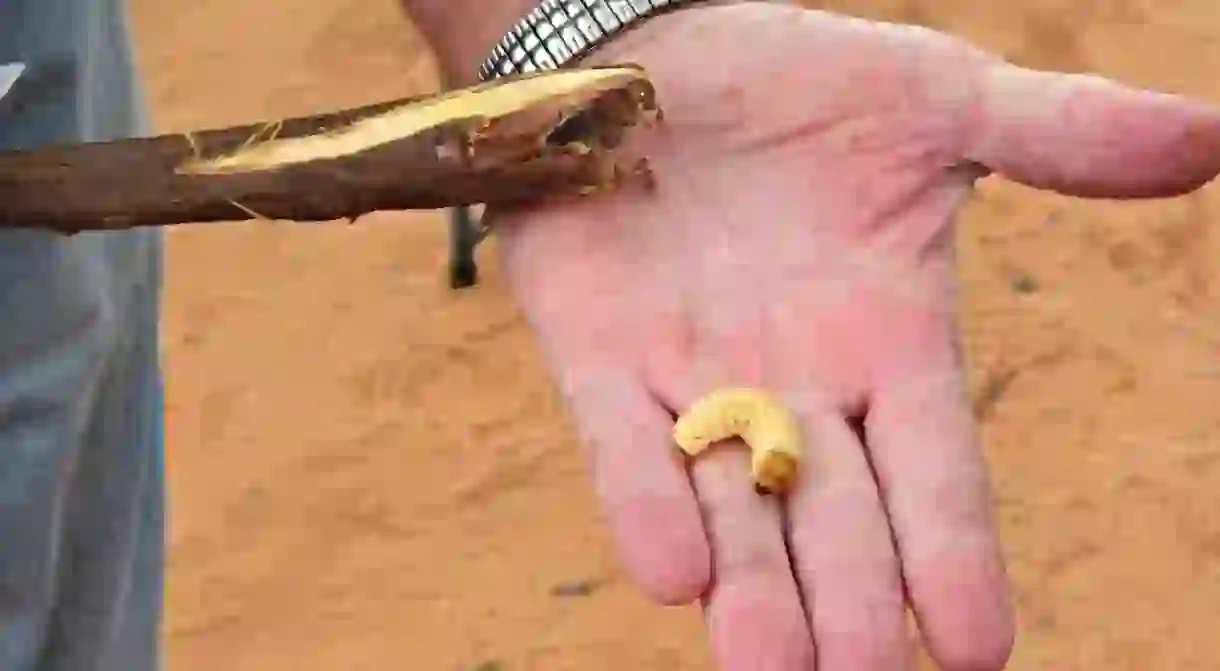Spotlight On Witchetty Grub, An Australian Bush Tucker Food

The thought of eating an insect may makes some people squeamish, but for many this is their main source of protein. The Australian Aboriginal communities have embraced the nation’s nature and lived off witchetty grubs for many years. We take a look at one of the most popular foods on Australia’s bush tucker menu.
What Is A Witchetty Grub?
Known as witjuri by the Adnyamathanha people from South Australia’s central desert, the witchetty grub is one of the most famous and popular from the nation’s bush tucker menu, if not a rather odd one to outsiders. Although the term ‘grub’ is defined as food, alongside the larva of certain insects, and in regards to this insect both definitions are accurate.
For many generations the larval stage of the large cossid wood moth has been chosen as a key source of protein by the Aboriginal communities. Growing up to 12cm in length, they bury themselves about 60cm below the ground feeding on the root sap of the Witchetty bush.
However, the name ‘witchetty’ is now used for any ‘fat, white, wood-boring grub’ including swift moths, longicorn beetles and other wood moths found in Australia; and are said to hold a similar taste.
http://instagram.com/p/6eGdHKk0MO/
Indigenous Australian Communities
Between November and January, Aboriginal women and children from many tribes would find these grubs by digging around the roots of the Witchetty bush. Historically, witchetty grubs have been a staple for Aboriginal communities, and today is still an important food and nutritious snack when living in the bush. Acting as a rich source of protein, it has been found that ’10 witchetty grubs are sufficient to provide the daily needs of an adult’.
Not only are these grubs an important food source for Aboriginal communities but they also feature in Dreamings (totemistic design or artwork) in many Aboriginal paintings. When these grubs are caught, they are said to leak ‘brown juice over fingers’ when you hold them; it is this juice that is used in Dreamings.
http://instagram.com/p/BIpMUUwAkS3/
Preparation and Flavour
The liquid centre of a raw witchetty grub tastes like almonds. However, if the idea of a live insect crawling down your throat turns you away, witchetty grubs can also be cooked on hot ashes or barbecued. When cooked, their skin becomes crisp like a roast chicken, whilst the inside meat becomes white and chewy. Depending on your taste buds, these cooked grubs will taste either like chicken or prawns with peanut sauce. Often eaten as an appetiser, they are a quick and easy meal, rich in protein.
Other Purposes
Not only are witchetty grubs a staple food, but they also serve as one of the top Aboriginal bush medicines. By crushing the grub into a paste and spreading over injuries, burns and wounds are seen to heal more effectively.
Among freshwater fisherman, these grubs are known as bardi grubs – although the term was originally used to name the longhorn beetle in the larvae form – and considered as bait.
http://instagram.com/p/BGEcX3gQtWQ/













